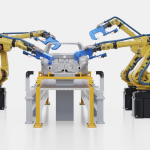According to the World Economic Forum’s latest white paper, “From Shock to Strategy: Building Value Chains for the Next 30 Years,” companies that treat end-to-end collaboration as a data integration problem will fall short. What’s emerging instead is a model where Tier 2 and Tier 3 suppliers are not just monitored but co-responsible for shared performance metrics, on emissions, compliance, labor practices, and more. The shift requires procurement and supply chain teams to move beyond static onboarding checklists toward live, verifiable participation in collaborative control frameworks.
Tier 2 and Tier 3 Are No Longer Buffer Zones
For years, multi-tier visibility was treated as a proxy for risk management. If a company could map its sub-tier suppliers, the assumption was that it could manage disruption more effectively. But today, that assumption no longer holds. Visibility without accountability has proven inadequate in the face of dynamic ESG regulations, reputational risk, and climate-linked disruptions.
The WEF’s 2025 scenarios point to a more advanced model, one where sub-tier suppliers aren’t just identified, but integrated into operational governance. In practical terms, this means equipping Tier 2 and Tier 3 suppliers with shared platforms that allow real-time collaboration on risk thresholds, emissions tracking, and compliance triggers. In some cases, it means rearchitecting supplier contracts around shared performance outcomes, rather than bilateral service levels.
This is already taking shape in sectors like electronics and life sciences, where leading firms are deploying shared supplier portals, multi-tier control towers, and digital product passports. These tools don’t just track data, they embed rules, thresholds, and triggers into operational workflows. Western Digital’s natural disaster response platform in the Philippines, for example, combines public risk feeds with on-site sensor data to escalate risks across its extended supplier base. That’s not visibility, it’s shared situational awareness, with defined response responsibilities at every level.
Live Data Is the New Trust Mechanism
Legacy supplier governance, rooted in audits, surveys, and lagging indicators, cannot support the operational demands of modern supply networks. As regulatory complexity grows, and as Tier 2+ risk becomes more material, companies need mechanisms for mutual accountability that are as dynamic as the risks themselves.
That’s where shared platforms are taking hold. Rather than relying on annual disclosures or disconnected supplier portals, leading firms are building multi-tenant environments where suppliers actively participate in performance tracking, emissions reporting, and workflow execution. Roche’s Basecamp 2.0, for instance, is more than a recipe transfer tool—it’s a foundation for synchronized execution across internal and external manufacturing partners, reducing lead times and eliminating translation gaps.
These are not visibility systems. They are operational command frameworks, designed to trigger actions when thresholds are breached, not just inform dashboards. Importantly, they establish a new model of trust, not based on credentials or certifications, but on continuous proof-of-performance within the system.
What Comes After Mapping
The next phase of supply chain maturity won’t be defined by who can identify their sub-tier suppliers, but by who can integrate them into continuous operational response. As accountability shifts from reporting to execution, the real differentiator will be the ability to detect, interpret, and act on disruptions in real time, across layers of partners, not just within the enterprise. Visibility is a prerequisite. But resilience will depend on how seamlessly external partners can operate within the same control logic.





